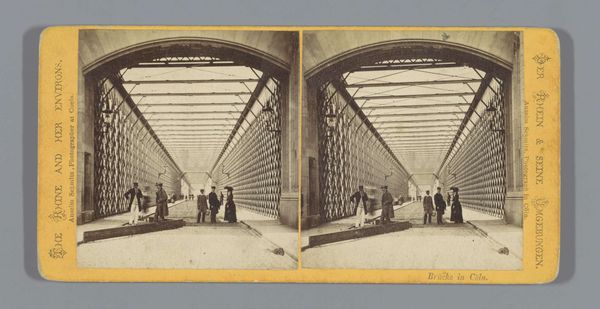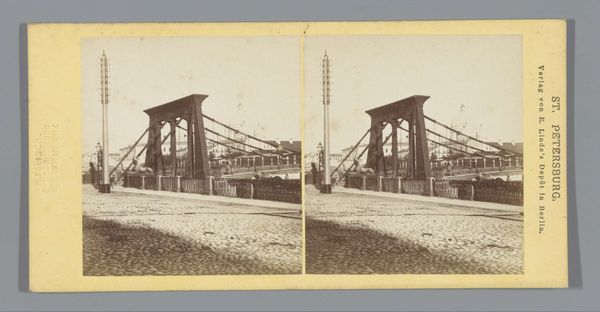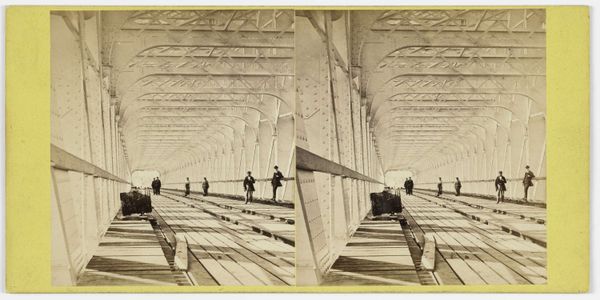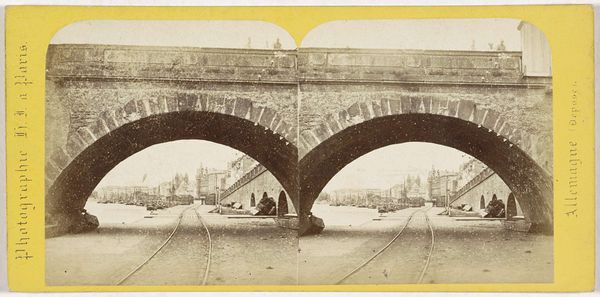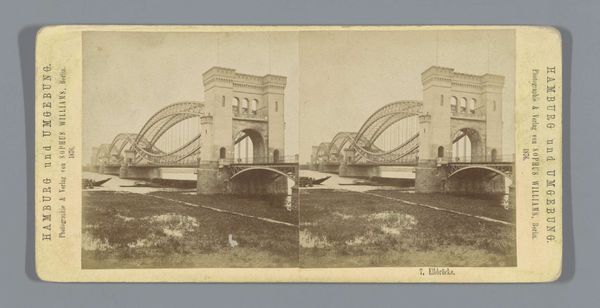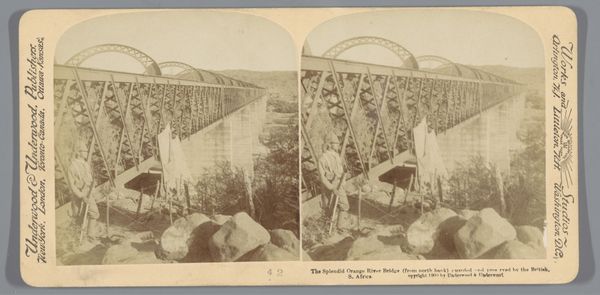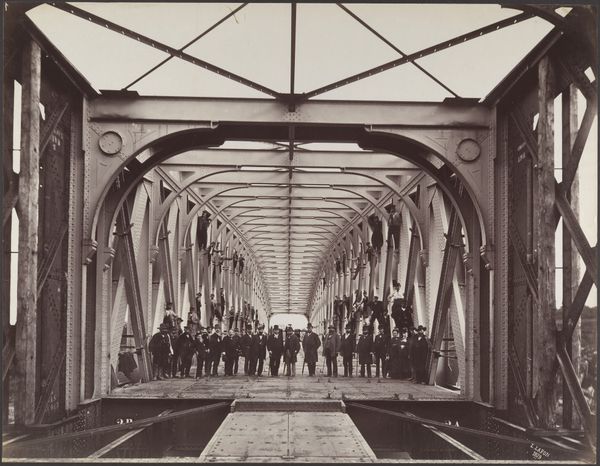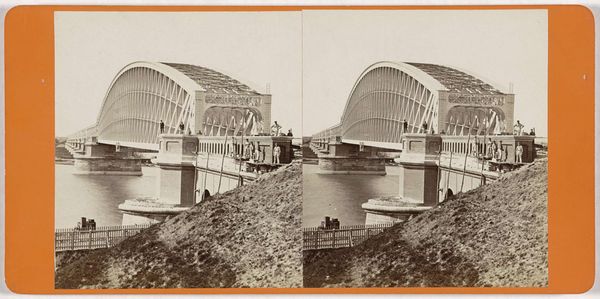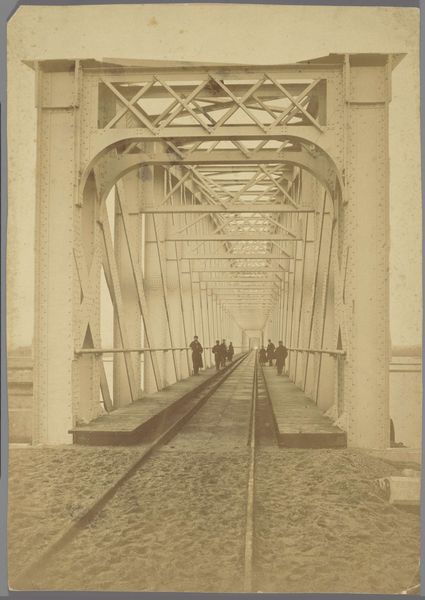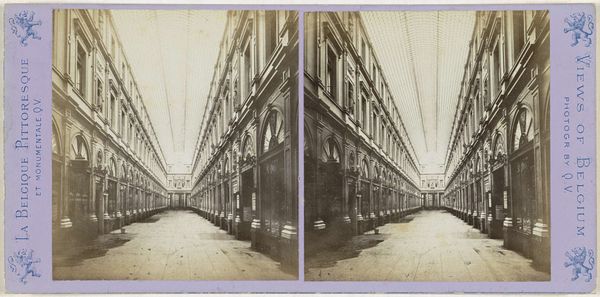
Gezelschap poserend bij de ingang van de Dombrug (Dombrücke) in Keulen c. 1860 - 1880
0:00
0:00
photography, gelatin-silver-print
#
portrait
#
photography
#
gelatin-silver-print
#
cityscape
#
realism
Dimensions: height 87 mm, width 172 mm
Copyright: Rijks Museum: Open Domain
Curator: Here we have a gelatin-silver print, a photograph by Anselm Schmitz entitled "Gezelschap poserend bij de ingang van de Dombrug (Dombrücke) in Keulen", taken sometime between 1860 and 1880. Editor: My first impression is one of striking geometrical rigor! The strong linear perspective converging towards the distant vanishing point almost overwhelms the figures posing near the entrance of this bridge. It's quite arresting. Curator: Indeed! It's interesting to consider this image through the lens of urbanization and industrialization in 19th-century Germany. Cologne, a city on the Rhine, was undergoing rapid transformation. The Dombrücke, or Cathedral Bridge, symbolized this progress, and it’s worthwhile to reflect on who was granted access to participate in, and benefit from, such modernization. Editor: Precisely! And notice the intricate iron latticework that constitutes the bridge’s structure. Its repetition creates this mesmerizing optical effect. There is a remarkable interplay between shadow and light which adds complexity to the geometrical patterns and lends texture to the whole photographic composition. Curator: The choice of figures also speaks volumes. We see individuals posed in what appears to be middle class attire, perhaps indicating those who could afford the privilege of having their photograph taken in such a modern, symbolic location. This kind of image might serve to reinforce certain hierarchies while marginalizing other segments of the population who were impacted differently by the urban change underway. Editor: Right! By highlighting particular people in carefully chosen spots, the photo also functions as a piece of carefully planned stagecraft. It is important not to read too literally that these individuals would just have been wandering over the bridge naturally when captured by the artist's lens. There’s a performance being enacted that draws viewers in. Curator: And by thinking intersectionally we might examine gender roles depicted. The presence and pose of the woman standing to the right among the men is striking, her attire suggesting a particular class position but also implicitly signaling permitted societal spaces at the time. The photograph freezes a very specific type of social and industrial reality. Editor: So, overall we could say that this image achieves something intriguing and perhaps even something rare. With this almost obsessive rigor on patterns of visual forms it creates, perhaps inadvertently, both the allure and alienating elements of an industrializing city. Curator: I agree. Looking at this photograph makes me reflect upon how the selective framing of industrial progress leaves out important elements of the historical record.
Comments
No comments
Be the first to comment and join the conversation on the ultimate creative platform.
